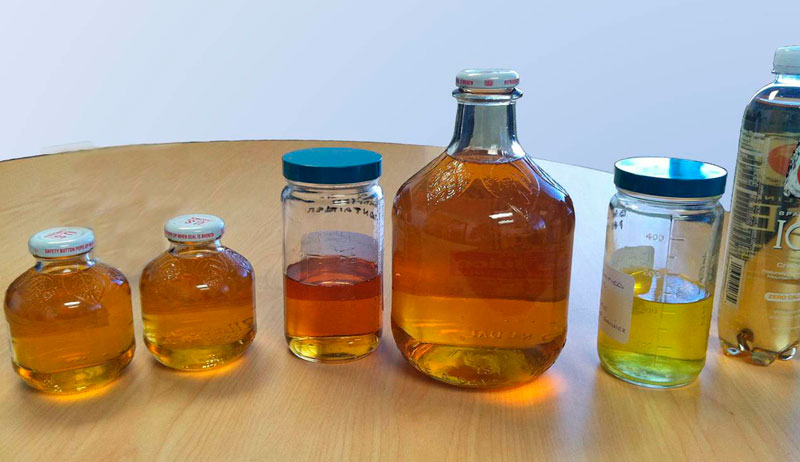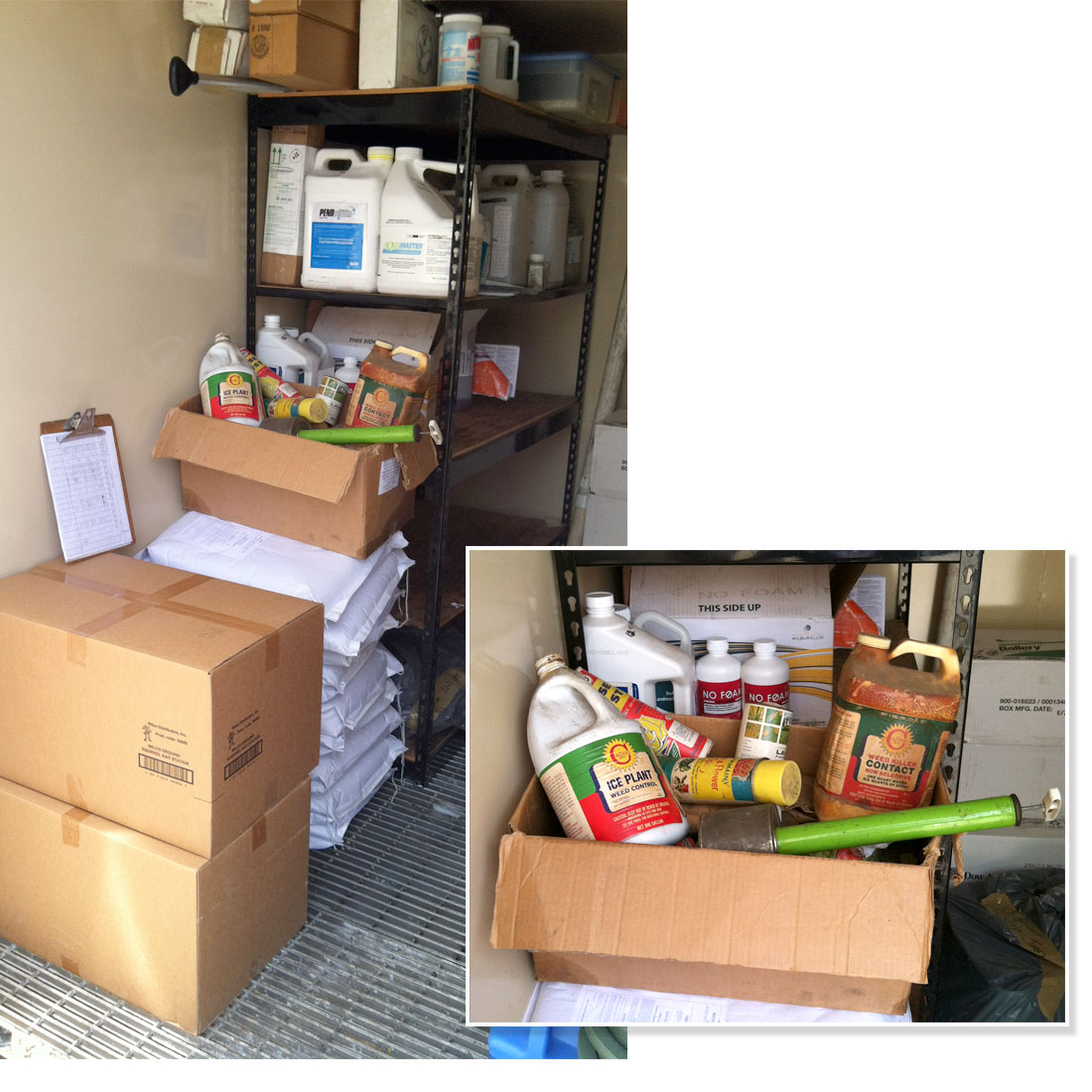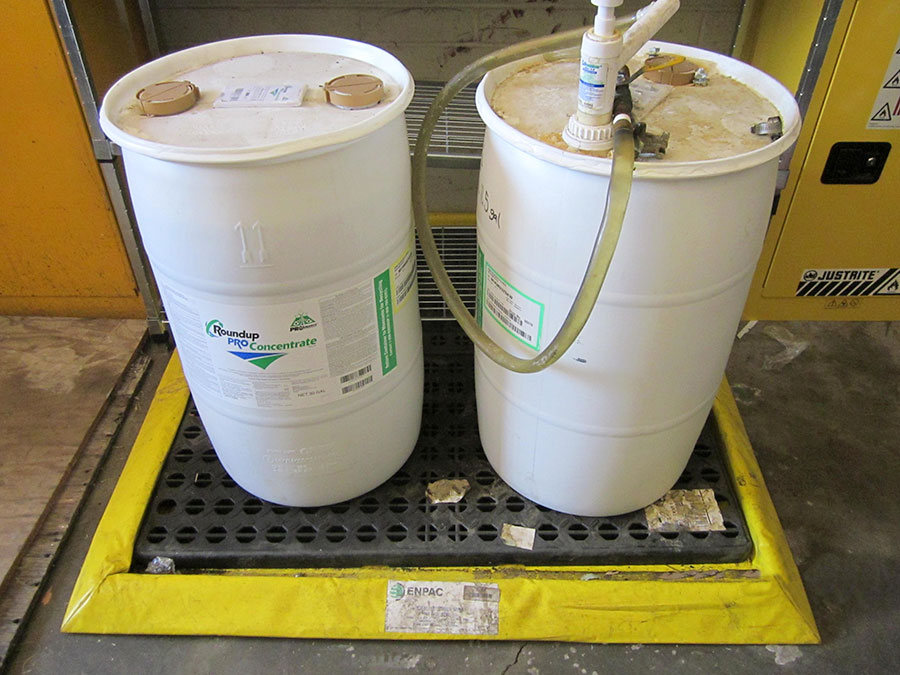SAFE AND PROPER STORAGE OF PESTICIDES AND FERTILIZERS AND DISPOSAL OF USED PESTICIDE CONTAINERS
Storage
Every pesticide label is required by federal law to contain information on how to properly store the product. Each person responsible for pesticides is expected to read, understand, and comply with the storage requirements which almost always require the product to be stored in its original container away from food (including pet food), feed, seeds, and sometimes fertilizers.
State law prohibits storage of PPE (Personal Protective Equipment) with pesticides and requires that all storage areas that hold, or have held, pesticides labeled with the Signal Words “Warning” or “Danger” to be posted with signs visible from any direction of probable approach. If required, the signs must be readable at a distance of 25 feet and be worded substantially as follows:
DANGER
POISON STORAGE AREA
ALL UNAUTHORIZED PERSONS KEEP OUT
KEEP DOOR LOCKED WHEN NOT IN USE
All pesticide containers shall be locked up or under the personal control of a responsible person which in most cases means the person shall have them in his or her sight. If a pesticide is being transported to another facility, it must be delivered into a locked enclosure or directly to a responsible person. In NO CASE shall a pesticide be placed or kept in a container commonly used for food or drink.
With a few exceptions, every County department should attempt to minimize the quantities of pesticides stored. This can be accomplished by careful review of past usage and anticipated needs. For some commonly used products, the County may have a Master Agreement with product vendors which would allow departments to buy smaller quantities while still getting the large quantity purchase advantage. Departments are encouraged to check with ISD or ACWM to see if the product(s) they would like to purchase are available on a Master Agreement.
DO NOT accept “free” pesticides from another agency without consulting with ACWM first! Experience has also shown that it is never a good idea to allow employees to store personal items, including their own pesticides, in a County storage area.
Pesticides and fertilizers are to be stored indoors or under cover on a paved surface. If there is even a slight chance of container leakage or spillage from handling, secondary containment is to be used. Pesticide and fertilizer storage areas are to be inspected at least monthly. The inspection should include:
- Verification that it is kept locked
- Check for Leaking containers
- Containers are labeled
- Unauthorized or non-compatible materials
- Sign Posting (if required)
Used Pesticide Container Disposal
As with pesticide storage, federal law requires each pesticide label to have specific directions on the proper disposal of the pesticide and its container. State law also requires that, except for containers to be returned to the registrant, each emptied container that has held less than 28 gallons of a liquid pesticide that is diluted for use shall be rinsed and drained at the time of use as follows:
- Less than 5 gallons use 1/4 container volume of rinse water
- 5 gallons or over use 1/5 container volume of rinse water
- Using the amount or rinse water from 1 or 2 above:
- Place required minimum amount of rinse water in the container, replace closure securely, and agitate
- Drain rinse solution from container into tank mix. Allow container to drain 30 seconds after normal emptying
- Repeat a minimum of two times so as to provide a total of three rinses
After being used and rinsed, if required, containers may be discarded or offered for recycle as allowed by the label. They should not be kept and used to store something else. Even though pesticide labels are required to include information on disposal of the actual pesticide, it shall
be the goal of every county department to ensure there is almost never a “leftover” pesticide requiring disposal at a landfill. If this seems like it might be the only option, ACWM should be contacted for a review of the proposed disposal.




